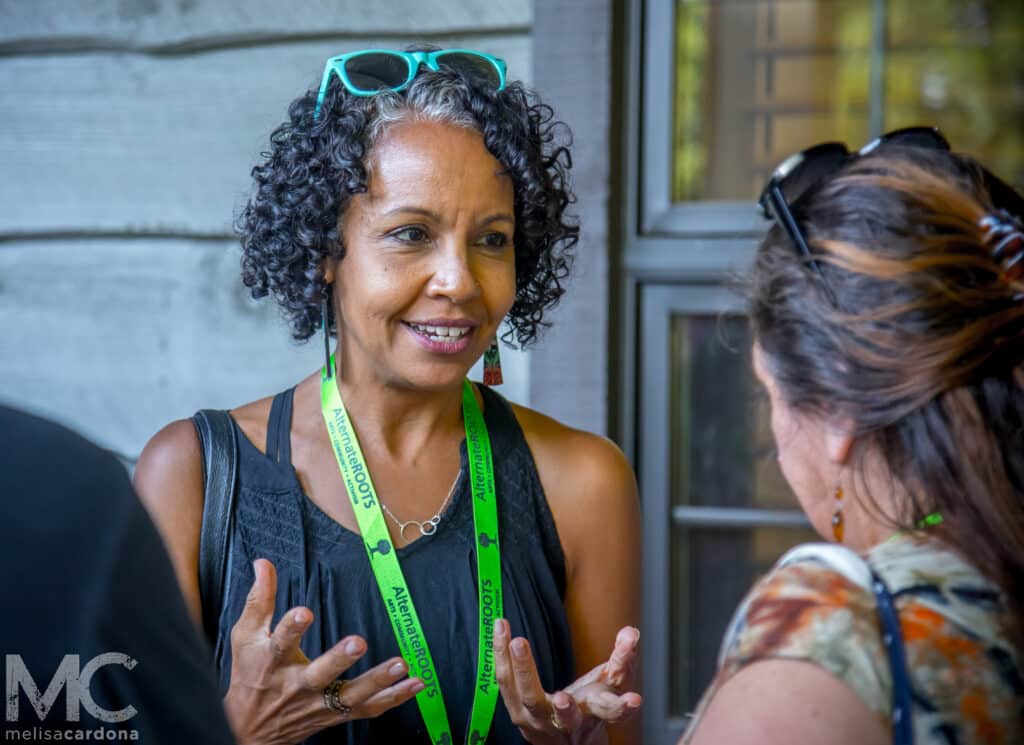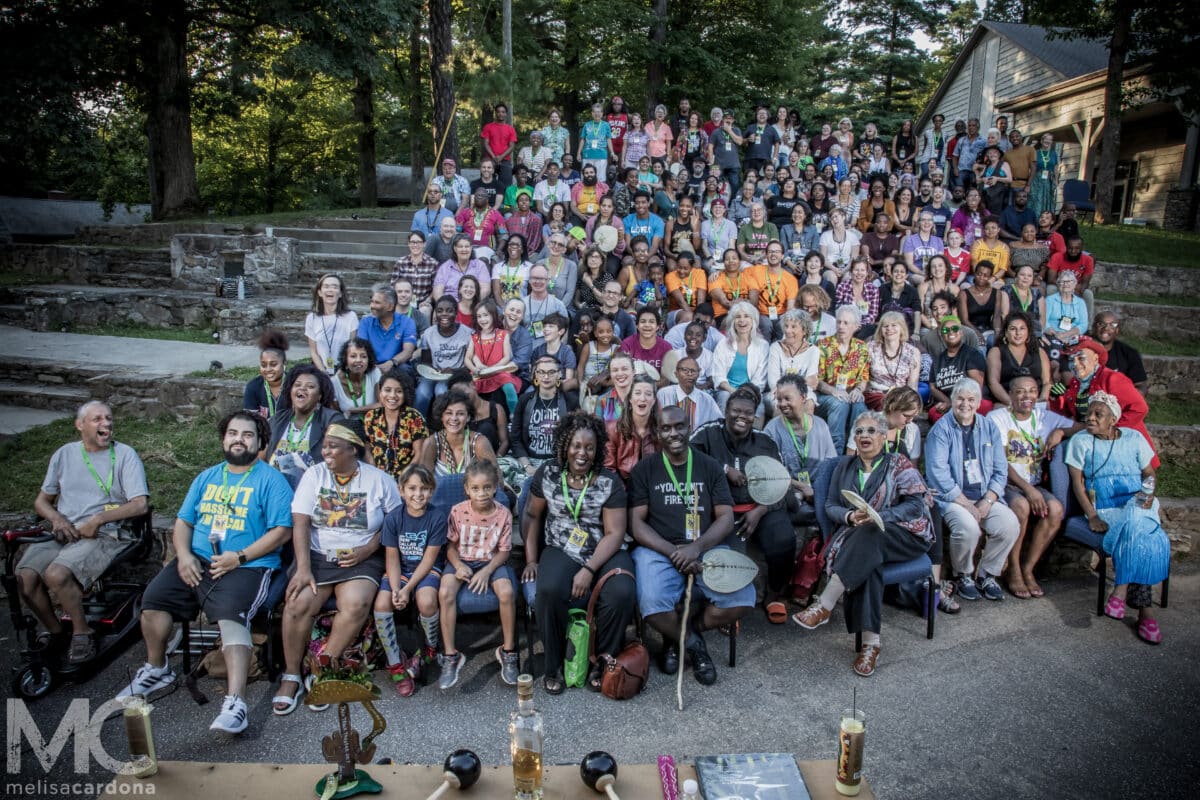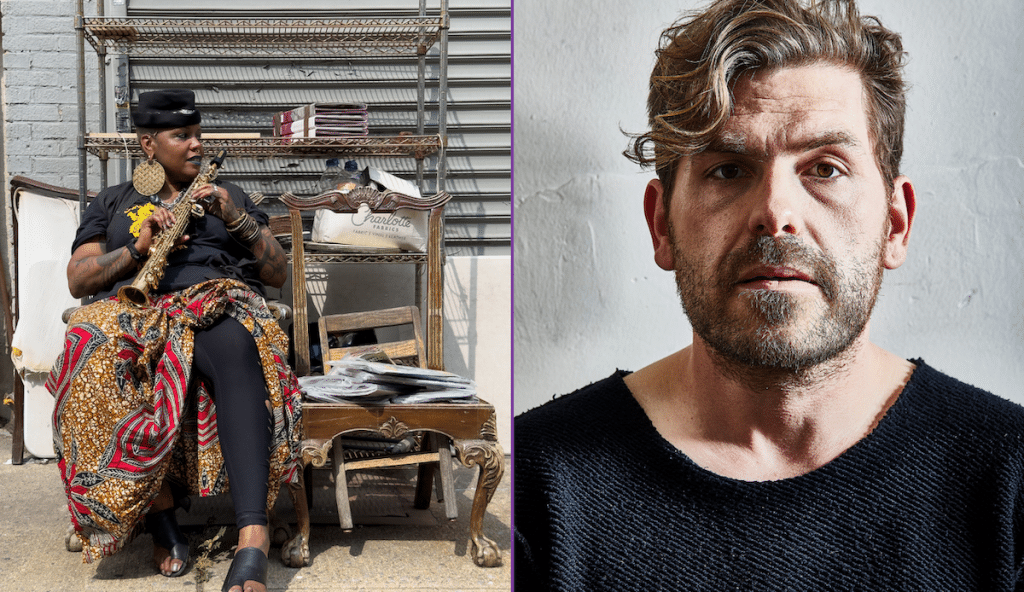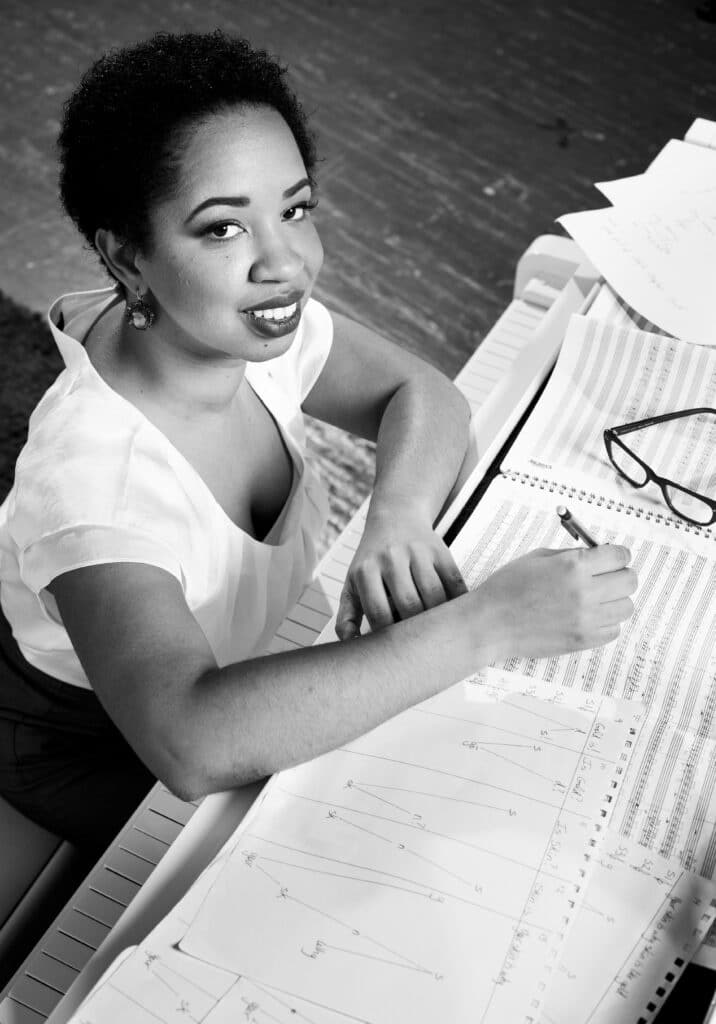Q&A: Michelle Ramos of Alternate ROOTS
An interview with the civil rights lawyer-turned-arts leader on the racial and economic inequities of the pandemic and the integral role of the arts in a moment of national crisis.

Michelle Ramos is the executive director of Alternate ROOTS, a nonprofit organization that works at the intersection of social and economic justice and the arts in the American South. ROOTS was founded in 1976 at the Highlander Center in New Market, Tennessee, a storied training ground for social justice leaders where the likes of Martin Luther King, Jr., Rosa Parks, and John Lewis received key training. Initially theater-focused, ROOTS eventually expanded to welcome all artistic disciplines while also continually working to diversify its membership and leadership. Today, in Ramos’ words, “you would be challenged to find a more diverse nonprofit organization.”
Ramos herself has enjoyed a remarkable and incredibly varied career. A professional ballet dancer out of high school, she returned to college in her late 20s before taking leading roles in a number of dance organizations. The first in her family to receive a college degree, she later went on to law school, inspired in large part by her uncle: incarcerated in a prison in Colorado, he organized for the rights of his fellow inmates until his death at the hands of a corrections officer. “I realized,” Ramos said, “if he did so much from inside of a prison cell, imagine what I could do from outside of one?” As both an attorney and an arts leader, she has since worked steadily to dismantle racist systems and institutions across the U.S.
Last month, Ramos took time out of her busy schedule to discuss the continually pressing needs of Southern artistic communities in the pandemic, the deep and irreplaceable value of art in social movements, and the importance of personal and communal reflection in a time of national crisis.
-Andrew Frank
When we first started discussing the idea for this interview, the story was very much Covid-19, and although the situation in our country has of course gotten more complicated since then, I’d still like to begin there. Alternate ROOTS has been engaged in advocacy around the disproportionate impact that Covid-19 has had on communities of color, and specifically artists of color. Can you talk a bit about the underlying situation, and your organization’s response?
Our immediate response was just caretaking for our members. The minute Covid hit, there were people in our network that were sick or had deaths in their families. We lost members. The focus was really just: what do we need to do to support our members? So, we did what we could to try to get some money in hand, so we could get that dispersed out to people. Then we just tried to be responsive to the day-to-day things that were coming in. For example, we have a member who has lupus that lives in Alabama. Because of the unavailability of hydroxychloroquine, which had suddenly become the drug of choice, she was unable to get her prescription, and that created a very big health crisis for her. So, we had to activate our membership across our different regions to see if we couldn’t get somebody in a different region to get the medication that she needed. It was literally putting fires out like that.
Then, as soon as we were able to solicit some funds from a few different places, we immediately started what we call the Solidarity Fund, which is basically a five-question questionnaire that you fill out online, explaining what your need is. We literally got that fund up and running within a week.
The other big piece of it is that the majority of our members, as well as half of our staff, are all working artists. ROOTS prides itself on hiring working artists; we don’t believe you should have to choose between being an artist or an administrator. But what that meant is that half of our staff immediately lost half of their income, just like that. So, in addition to holding the membership, we were working to keep our staff whole as they’re doing this work.
That’s all in the first week. Then, all of a sudden, people started paying attention to the issues around class and race with respect to treatment. We witnessed this in our membership. We have a member who is Latina, who went four times to the hospital to try to get admitted, who was definitely ill, and who almost died from the virus. They didn’t admit her until the fourth time. That, versus a colleague of ours who was admitted on the first time, and she’s white, you know? So, we started trying to do our best to amplify the stories that we were seeing and hearing on the ground, and trying to work with our members in their different communities to advocate for them.

Is there a message within that for other organizations or individuals who are trying to help, but maybe aren’t sure how best to do so? It seems that part of this story is also about the landscape of arts funding in this country more broadly.
Our application was actually taken and modeled by many organizations, because of the ease of it. We wanted the least amount of barriers possible. Because we are in the South, we are also very much subject to the digital divide. A lot of our members do not have internet access or do not have reliable internet access, or do not have computers, or do not have smartphones. And so our response wasn’t just: turn on a computer and get set up on Zoom and send it out to the world. It was trying to reach out to our members who don’t have digital access.
I think the message for some smaller organizations is: lower the thresholds, lower the barriers. Our application was five questions. You could fill it out in two minutes. For people who don’t have internet access, they would call the office and then we would fill it out for them.
But the broader conversation around that is indeed about how, in my experience, the philanthropic arts community—in many cases—fell back into status quo practices of trying to troubleshoot, but without using an equitable lens.
Everybody’s talking about equity, but then you get into a moment of crisis, and then everybody just moves right back into the status quo. There are historic thresholds that marginalize and basically exclude certain members of the arts community from qualifying for grants, simple things like prioritizing grantsmanship, fitting expectations of what ‘professional’ means, or language and disability barriers. If that language is used in applications, then my folks are out, because some of my folks are community organizers that identify as artists; some of them are activists who also identify as artists. They don’t fit into that status quo ‘artist’ box, and so, consequently, they don’t get the funding.
So I take it that Covid—and specifically this on-the-ground response to the need in your community—is still where your focus is at this moment?
Yes, it is. It’s funny; I was having a conversation with a funder yesterday and they were asking questions, like, ‘What are you anticipating? What is the need going to be? Do you think there are going to be organizations that are going to have to close?’ They were already all the way down the road and I was like, Whoa, whoa, come back over here! We can’t even get to that! We’re still dealing with the day-in and day-out on-the-ground crisis.
Something that I’m hearing a lot from artists is: why practice an art at this moment, when there’s so much urgent work to be done on these issues? Your organization seems to be very good at connecting these two different kinds of work: artistic practice and organizing. I wonder if you could speak to the unique role that the arts play in this context.
For us, the art tells the story. George Floyd is almost a perfect lens to think about this. It’s horrible, and I don’t mean to in any way appropriate that story, but it’s a perfect reflection of what we’re talking about. If we had read about the George Floyd story, if we had heard it on a radio broadcast—no shame to radio folks—it would have been impactful; it would have been sad; people would have been upset. But the fact that this man’s pain and hurt and harm, and just the outright lack of humanity of those officers in that moment, was captured and immediately put on people’s screens, right in front of them—in a sense, that media was a form of art. It was telling a story.
It’s the storytelling that moves peoples’ minds and moves peoples’ hearts. You hear that all the time; it’s almost cliché now. But this is a real moment where the visualization of something, even if you didn’t watch the video and saw only just the snapshot of that moment, told the story of what happened to that man, as well as many others. And that reverberated across the globe like nothing we’ve ever seen before.
Art shows up, at least for our artists, as a tool, as a resource, as a mechanism by which we believe that we make the advocacy stronger. We partner with community organizers, with social justice folks, so that the art can help to amplify whatever the cause is, because it will resonate with people in a way that data doesn’t resonate. It will resonate with people at the heart level.
This reminds me of something I encountered a couple times in your organization’s online materials, which is the idea that cultural change anticipates or preempts policy change. This is something that I think most people understand intuitively, but might not often think about in practical terms. The arts clearly have a role to play in that.
Yeah, absolutely. I’ve witnessed this with my own eyes. I’ve witnessed a legislator, someone who had been a proponent for solitary confinement, step into an exhibit with one of our artists whose work is about this issue. When he had to stand in that space, recognizing the size of a solitary cell for probably the first time in his life, recognizing what it meant to be in a space that small for twenty-three or twenty-four hours a day, for twenty or thirty years, in some cases, it brought him to his knees. If I had been sitting in a city council room across from him, trying to tell that story, it likely wouldn’t have mattered in the least to this man. It wouldn’t have, because he wouldn’t have had the experience where he actually stood in the space and looked around and thought, ‘Oh my God, this is barbaric.’ I saw it bring him to tears. So yes, art, by telling this story, by creating that experiential thing that happened on that day, changed that man’s mind and then fundamentally led to helping him get on the other side of that argument and that legislation.
For the artists and arts administrators that have been forced to pause their work because of Covid, are there things you hope they’re using that space to engage with or think about? I’m thinking specifically of ideas that might inform how they return to the work.
I’m going to give you an answer that you probably won’t love: I have been advocating so hard since the stay-at-home orders began for people to just stop. We are all subject to this capitalistic structure in which we live. What I witness on social media—and I’m not a big fan of social media—is that people still, even when they are locked in their homes and they’re told they’re not supposed to go anywhere, they feel this need to produce. They think: ‘I need to do something. I have this downtime and I need to figure out what to do with it and how I can maximize it and how I can leverage it.’
And I’m like, how about you sit in it? How about you take a moment and reflect and think about what would be meaningful and intentional and help you grow your humanity, instead of continuing to buy into this capitalistic idea that you have to be doing something to prove that you’re valuable.
I think that the lost message in all of this for so many people—and it’s not their fault, it’s the world we are all a part of—is that these are moments for people to really dig deep on their own humanity and figure out who they are and what they stand for and what they want for their lives, for their jobs, for their organizations. Instead, everybody’s trying to figure out, how are we going to open the theater? How are we going to get the people back to work? And what are the mechanisms by which we’re able to get audiences into seats? And I’m like, y’all, just take it down a notch. The universe made us all come over here and get in our corner and have a ‘time out’ for a reason. Pay attention. Regardless of what you believe in—religious or otherwise—somebody is sending a message to us to sit down and think about what we’ve been doing, in the stillness and the solidarity and the quietness of our own homes.
Is there anything else you’d like to share with our membership that you feel is important, or that’s not being amplified or heard right now?
We’re in this really great moment in time where consciousness is being raised around issues that have been going on in this country since its founding. It’s a very, very hard thing to hear and to read and to see and to step into. And it’s very easy to just back away from it. But I would challenge folks in your membership to learn more, to get involved more, to unpack some of their own internalized oppressions, both personally and organizationally within their institutions. Do that with the understanding that it’s going to be hard, and that the only way that this world and our society and the world gets better is if everybody is treated equitably and justly.
And know that it’s going to be a long time. It’s probably not going to happen in my lifetime. But I wake up and do this work every morning because I want a better world for my grandchildren, and my great grandchildren. It’s a world that I probably won’t get to witness personally. But if I wake up every day and keep doing the work I’m doing, I know the world will be better for them. So, I would say: who do you want the world to be better for? And what are you doing to make that happen?



